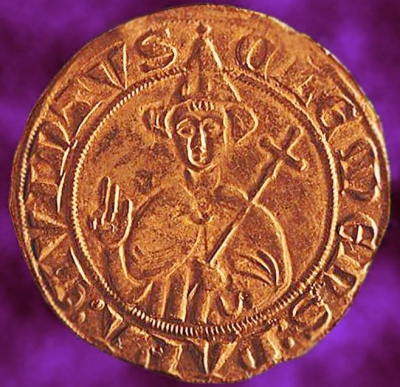Jacques de Molay (French: [d ml]; c. 12401250 11 or 18 March 1314), also spelled "Molai", was the 23rd and last grand master of the Knights Templar, leading the order from 20 April 1292 until it was dissolved by order of Pope Clement V in 1312. Though little is known of his actual life and deeds except for his last years as Grand Master, he is one of the best known Templars.
Jacques de Molay's goal as grand master was to reform the order, and adjust it to the situation in the Holy Land during the waning days of the Crusades. As European support for the Crusades had dwindled, other forces were at work which sought to disband the order and claim the wealth of the Templars as their own. King Philip IV of France, deeply in debt to the Templars, had Molay and many other French Templars arrested in 1307 and tortured into making false confessions. When Molay later retracted his confession, Philip had him burned upon a scaffold on an island in the River Seine in front of Notre-Dame de Paris in March, 1314. Both the sudden end of the centuries-old order of Templars and the dramatic execution of its last leader turned Molay into a legendary figure.
Pope Clement V (Latin: Clemens Quintus; c. 1264 – 20 April 1314), born Raymond Bertrand de Got (also occasionally spelled de Guoth and de Goth), was head of the Catholic Church and ruler of the Papal States from 5 June 1305 to his death in April 1314. He is remembered for suppressing the order of the Knights Templar and allowing the execution of many of its members. Pope Clement V was the pope who moved the Papacy from Rome to Avignon, ushering in the period known as the Avignon Papacy.

 English
English  español
español  français
français  português
português  русский
русский  العربية
العربية  简体中文
简体中文 
